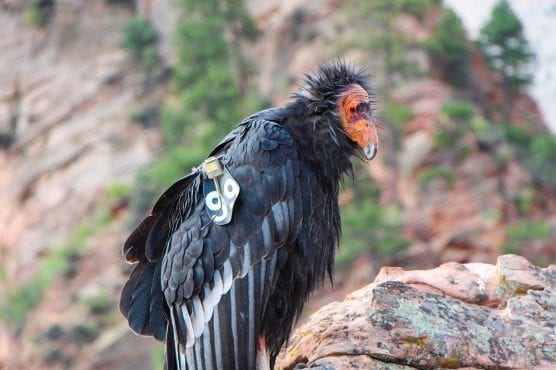California condors will soon glide through the skies in Oregon, Nevada and Northern California if a government plan to expand the birds’ range into their original territory becomes reality.
The U.S. Fish and Wildlife Service released a plan Friday to reintroduce endangered California Condors at Redwood National Park in Northern California – an area where they haven’t been spotted since 1925. The service expects the birds to establish a permanent breeding colony near the release site and expand from there into Oregon and Nevada, due to the abundance of nearby habitat.
The mountain ranges along the coasts of Oregon and Northern California and nearby Klamath-Siskiyou Mountains provide exactly the type of nesting and feeding sites the birds like best.
Working in partnership with the Yurok Tribe and the U.S. Park Service, Fish and Wildlife plans to release up to six juvenile birds at the site each year. The proposed plan is now headed to peer review and a 60-day public comment period.
The iconic scavengers ranged from Canada to Mexico when white settlers first arrived on the West Coast. But their numbers soon plummeted, mostly due to poisoning from lead bullets left in the carcasses upon which they feed. By the mid-1980s, they were so close to extinction that the government captured the last of the wild birds for a captive breeding program.
Since then, Fish and Wildlife has released birds at four sites in the coastal mountains, old-growth forests and desert cliffs of Southern and Central California, Baja California and Arizona. The birds have established three separate populations that occasionally intermingle.
By December 2017, the most recent data available, there were 290 condors living in the wild. But they still rely heavily on the government’s breeding program for population growth and require intensive management like continual monitoring, annual trapping to check for disease, triage for poisoned and injured birds, and what the government describes as “nest observation and intervention to maximize productivity in the wild.”
Condors are big birds. Weighing between 20 and 24 pounds, they dwarf the three-pound turkey vulture, a relative. Condors soar on warm updrafts of air and, with their 10-foot wingspan, can fly exceptionally long distances. Government scientists have tracked individual birds traveling 400 to 500 miles between colonies.
Exclusive scavengers who forage socially, the condor populations are especially vulnerable to poisoning. One contaminated carcass can sicken an entire group in the course of a single meal.
That dynamic makes it especially important to establish new populations of the birds, the service says. Reintroducing condors into the Pacific Northwest will reduce the chance that one catastrophic event could decimate a large portion of the population.
Condor populations would thrive on their own if they were free from the threat caused by lead bullets, according to the service. In 2008, California passed the Ridley-Tree Condor Preservation Act, which will be fully implemented this year to restrict the use of lead ammunition in hunting. Oregon, Arizona and Utah have voluntary lead reduction programs.
Condors can live to be 50 years old. They begin breeding around age 8 and usually mate for life. However, the death of one bird “can trigger a chain reaction with multiple pairs switching mates,” according to a report from the U.S. Fish & Wildlife Service. Breeding pairs lay a single egg, each year or every other year, though they will usually lay a replacement egg if the first is lost early.
U.S. Fish & Wildlife Biologist Jesse D’Elia told Courthouse News the plan is an important step forward.
“This effort is significant as it would be the first reintroduction of California condors to the northern half of their historical range, which once extended to southern British Columbia,” D’Elia said in an email. “Reintroducing condors to the Pacific Northwest will restore an important element of the ecosystem that has been missing for a century.”
Like this:
Like Loading...
Related





 Tweet This
Tweet This Facebook
Facebook Digg This
Digg This Bookmark
Bookmark Stumble
Stumble RSS
RSS


























REAL NAMES ONLY: All posters must use their real individual or business name. This applies equally to Twitter account holders who use a nickname.
0 Comments
You can be the first one to leave a comment.